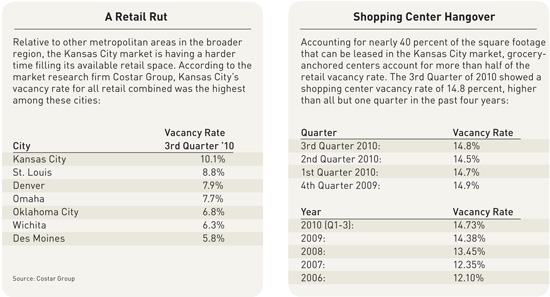
Investments
“Two or three years ago,” observed Owen Buckley, “the big talk was opportunity funds. Everybody was starting an opportunity fund to get ready for the crash. What’s happened to all those great buys?”
“Still lots and lots of dirt. You can buy dirt at 10 cents on the dollar if you’re in the residential lots,” said Dan Lowe. As he explained, these funds, for the most part, were created to buy income-producing properties. For appropriate properties, there is a great deal of competition.
As Joe Platt observed, long-term money is chasing grocery-anchored developments with strong backing and good location. “Cap rates, more so than ever, follow interest rates, and I don’t see that trend going away. It’s all based on your borrowing costs and what you can buy it at, and what your spread is. That’s true for every asset class, multifamily, industrial-office.”
Bob Johnson noted that there were still some “sentimental buyers,” people who thought they had to invest their money and as a result were paying too much. “With decreasing rental rates and stagnant renovation-construction costs,” he added, “if you didn’t buy it right, you’re upside down.”
Dan Lowe observed that he had seen any number of projects that should not have been approved in the first place. “Money was easy,” he added. “Wall Street was forcing them to do deals. They had no purpose.” In those projects that were market-driven, rents have held; those without purpose have had problems.
“The thing is,” said Bob Johnson, “not every bad property can become a good property. That’s why you have to have discipline in these things.”
An added burden, as Dan Lowe pointed out, is that city planners were forcing greenfield development into urban molds, citing one particularly difficult intersection in Johnson County. “That was the peak of the Town Center craze,“ Jeff Haney confirmed. Planners would put out RFPs demanding “New Urbanism.” Haney added, “They wanted to move their city out there. Nobody should have touched that thing.”
Long Term
Owen Buckley asked his colleagues what they projected 10 years down the road.
“In our industry,” volunteered David Block, “pretty much everybody tries to be a surgeon and get good at something and do that.” He believes that in Kansas City, there is enough for everyone, and that those at the table would find ways to carve out their own slice as they have been doing for the past 10 or 20 years.
Dave Hickman observed that the Internet was obviously influencing retail, noting that companies like Blockbuster had already been overtaken by shifts in technology.
One unknown variable, John Rubenstein offered, is whether the government was going to tax Internet sales based on where the product was shipped. “I wonder if that’s ever going to happen,” mused Rubenstein. “Every municipality and state is looking for everything they can to fix their budget deficit,” said Dan Lowe.
Not all the influence is negative. As Mitch Truster noted, Beauty Brands had set up an e-commerce site. “We try to get every e-mail address of every customer that comes into one of our stores. Facebook, Twitter, those all complement our stores, and we see that expanding our brand.” And, as is true in Spin!’s case, Hickman added, some retail entities—those selling food, for instance—will remain untouched by electronics. ![]()